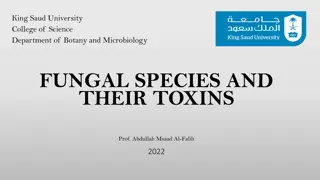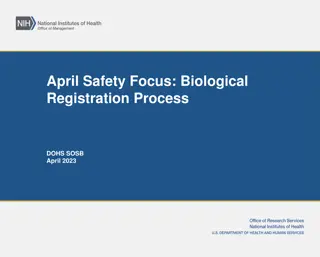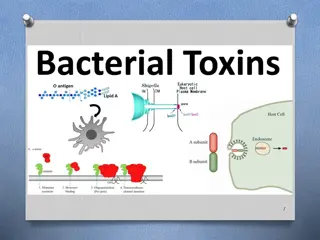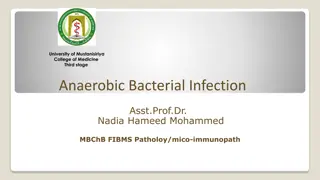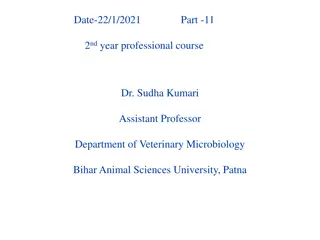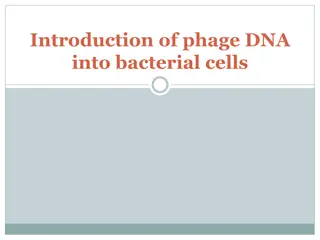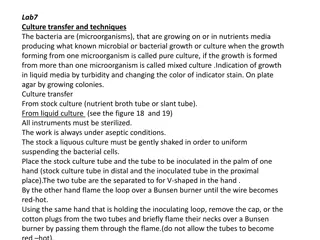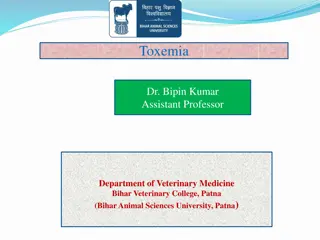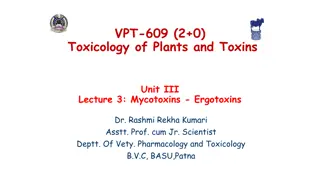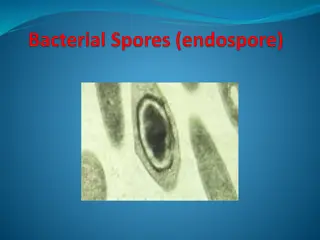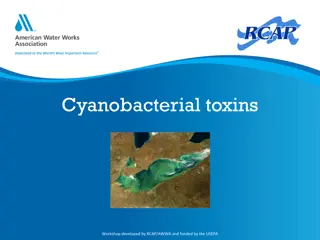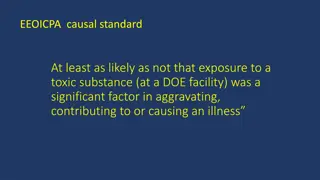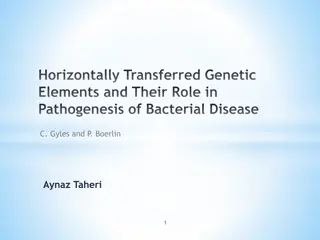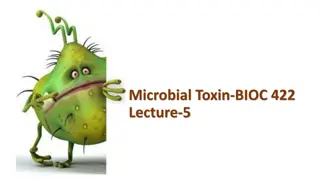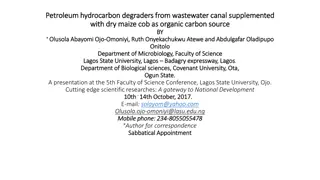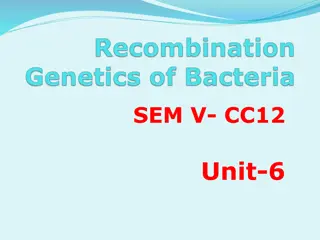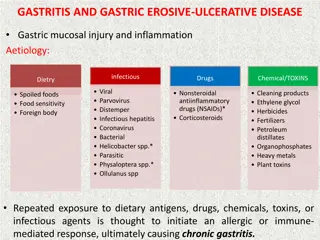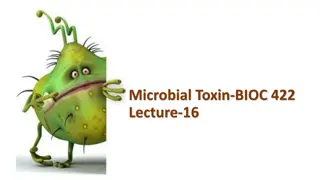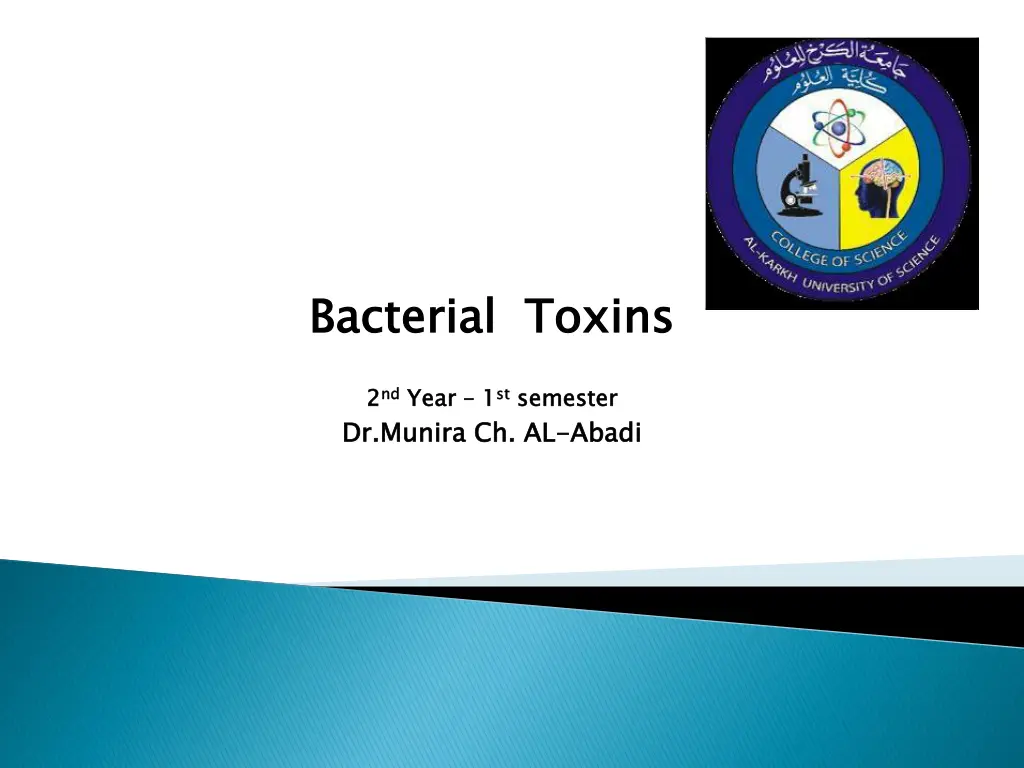
Understanding Bacterial Toxins and Their Role in Pathogenicity
Explore the world of bacterial toxins, enzymes, and pigments produced by various bacteria and their crucial roles in pathogenicity. Learn about different types of toxins, including proteins and lipopolysaccharides, and understand the actions of exotoxins. Discover the characteristics of exotoxins, the specificity of exotoxin production, and the importance of virulence in toxin production. Dive into the fascinating realm of bacterial toxins and their interactions with host cells.
Download Presentation

Please find below an Image/Link to download the presentation.
The content on the website is provided AS IS for your information and personal use only. It may not be sold, licensed, or shared on other websites without obtaining consent from the author. If you encounter any issues during the download, it is possible that the publisher has removed the file from their server.
You are allowed to download the files provided on this website for personal or commercial use, subject to the condition that they are used lawfully. All files are the property of their respective owners.
The content on the website is provided AS IS for your information and personal use only. It may not be sold, licensed, or shared on other websites without obtaining consent from the author.
E N D
Presentation Transcript
Bacterial Toxins Bacterial Toxins ndYear Dr.Munira Year 1 1st stsemester Dr.Munira Ch. AL 2 2nd semester Ch. AL- -Abadi Abadi
Bacterial Toxins Many bacteria produce toxins, enzymes and pigments. Toxins and enzymes play important role in pathogenecity. Toxins are of two types: Bacterial Toxins: : 1-Proteins: environment of pathogenic bacteria. Most of the protein toxins are thought of as exotoxins,since they are released from the bacteria and act on host cells at adistance. Proteins:may be released into the extracellular 2- Lipopolysaccharides( walls of Gram-ve bacteria. The (LPS) component of the Gram-ve bacteria outer membrane bears the name endotoxin because of its association with the cell wall of bacteria. Lipopolysaccharides(LPS LPS): ):are associated with the cell
Exotoxins Many bacteria produce proteins (exotoxins) that modify, by enzymatic structures. Effects of exotoxins are usuallyseen acutely, since they death)often result. Examples of this are botulism, anthrax, cholera and diphtheria. Ifthe host survives the acute infection, neutralizing antibodies (anti-toxins) areoften elicited that neutralize the affect of the exotoxin. Exotoxins: : action,or sufficiently otherwise potent destroy that certain effects cellular (e.g. are serious Characters of Exotoxin Characters of Exotoxin: : -The protein toxins(Exotoxins) are soluble proteins secreted by living bacteria during exponential growth. -The production of exotoxins is specific to a particular bacterial species(e.g. only Clostridium tetani produces Tetanus Diphtheria Tetanus toxin; ; only Corynebacterium diphtheria produces the Diphtheria toxin). -
Usually,vitulent strains of the bacterium produce the toxin(or range of toxins),while non-virulent strains donot. -Toxin is the major determinant of virulence. -Both Gram-positive and Gram-negative bacteria produce soluble protein toxins. -Many exotoxins ,consist of two components: subunit A(responsible for the enzymatic activity of the the toxin),subunit B(concemed with binding to aspecific receptor on the host cell membrane and transferring the enzyme across the membrane
AB AB- -toxin: toxin: Host Cell Binding. Host Cell Binding.
Exotoxins ,denatured by heat,acid,proteolytic enzymes. -Exotoxins are highly specific in the substrate utilized in their mode of action, ,usually the site of damage caused by the toxin indicates the location of the substrate for the toxin. Terms such as: :Enterotoxin, used to indicate the target site of some well-defined protein toxins. Enterotoxin,Neurotoxin, Neurotoxin,Leukocidin, Leukocidin,Hemolysin: Hemolysin:are -Protein toxins are strongly antigenic,unstable ,they lose their toxic properties(Toxoid),but retain their antigenic ones. Toxoids: antigenicity and their immunizing capacity (first discovered by Ehrlich). Toxoids: are detoxified toxins which retain their
Endotoxins: Endotoxins are toxic components of the bacterial cell envelope. The classicaland most potent endotoxin is lipopolysaccharide. However, peptidoglycandisplays many endotoxin-like properties. Certain peptidoglycans are poorlybiodegradable and can cause chronic as well as acute tissue injury. Endotoxinsare non- specific inciters of inflammation. Endotoxins:
. Endotoxin structure.
-Lipopolysaccharides(LPS)participates: In a number of outer membrane functions essential for bacterial growth and survival,especially within the context of ahost-parasite ineraction. - -Endotoxin complex associated with the outer envelope of Gram- negativebacteria such as:Salmonella,Shigella,Pseudomonas, ,Neisseria,and Other leading pathogens. - -The biological activity of endotoxin is associated with the lipopolysaccharides. - -Toxicity is associated with the lipid component (lipid A). -Immunogenicity(antigenicity) is associated with the polysaccharide components.
-The cell wall antigens (O-antigens) of Gram-negative bacteria are components of LPS. -Endotoxins are less potent than exotoxins,and less specific in their action,since they do not act enzymatically. -Endotoxins are heatstable (boiling for 30 min.). -Endotoxins,although strongly antigenic,cannot be converted to toxoid.
-Lipopolysaccharides(LPS)participates: In a number of outer membrane functions essential for bacterial growth and survival,especially within the context of ahost-parasite ineraction. - -Endotoxin complex associated with the outer envelope of Gram- negativebacteria such as:Salmonella,Shigella,Pseudomonas, ,Neisseria,and Other leading pathogens. - -The biological activity of endotoxin is associated with the lipopolysaccharides

